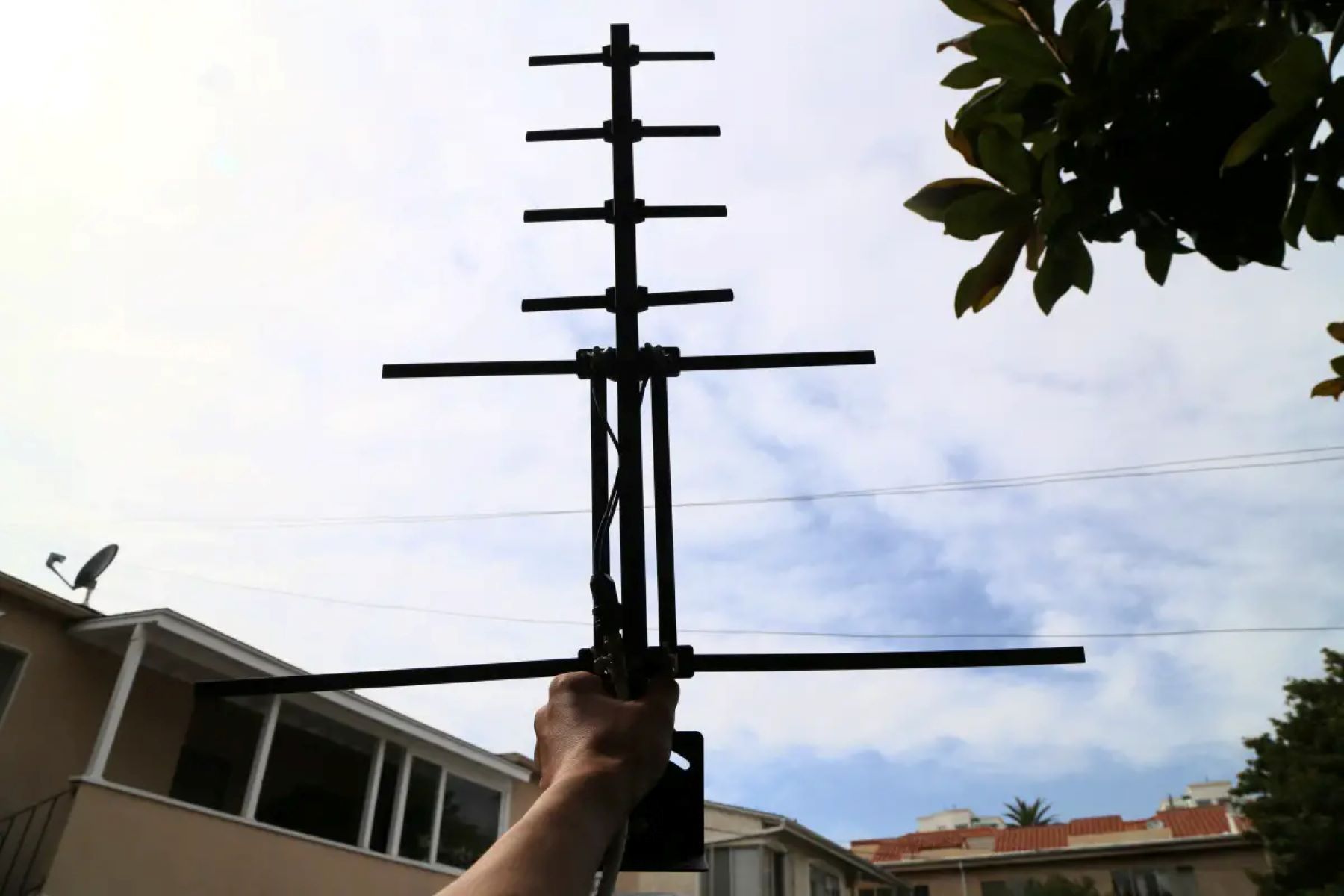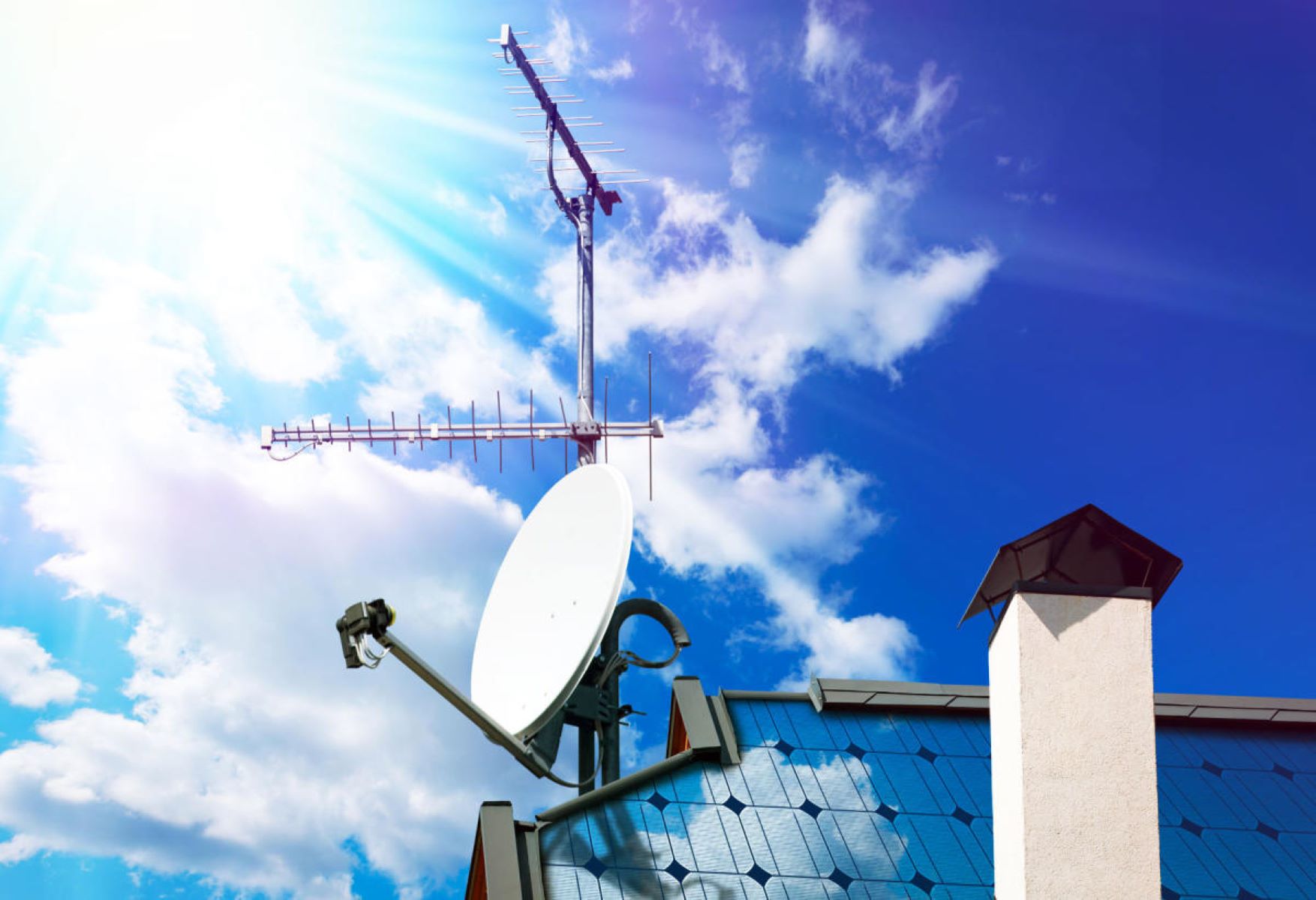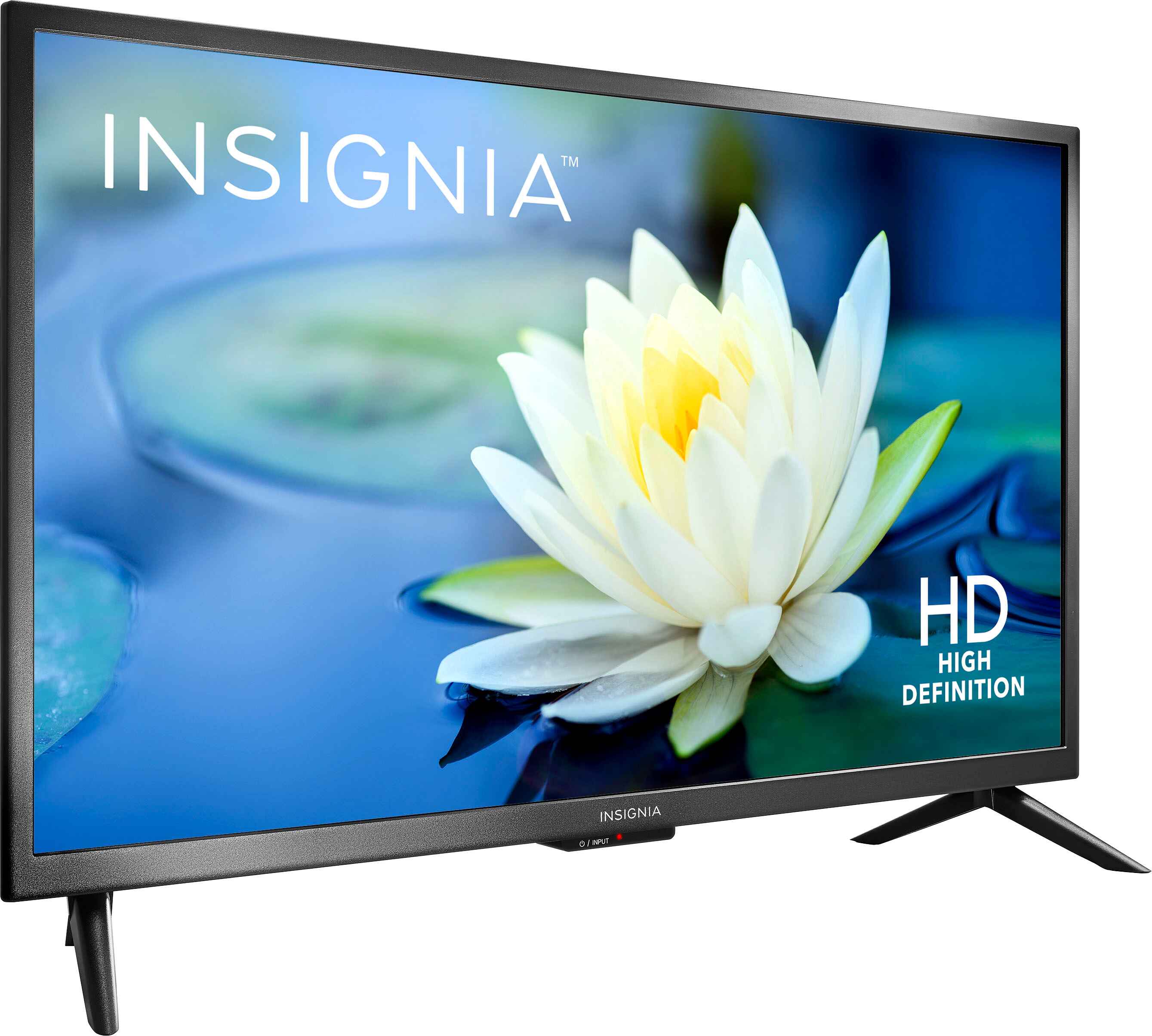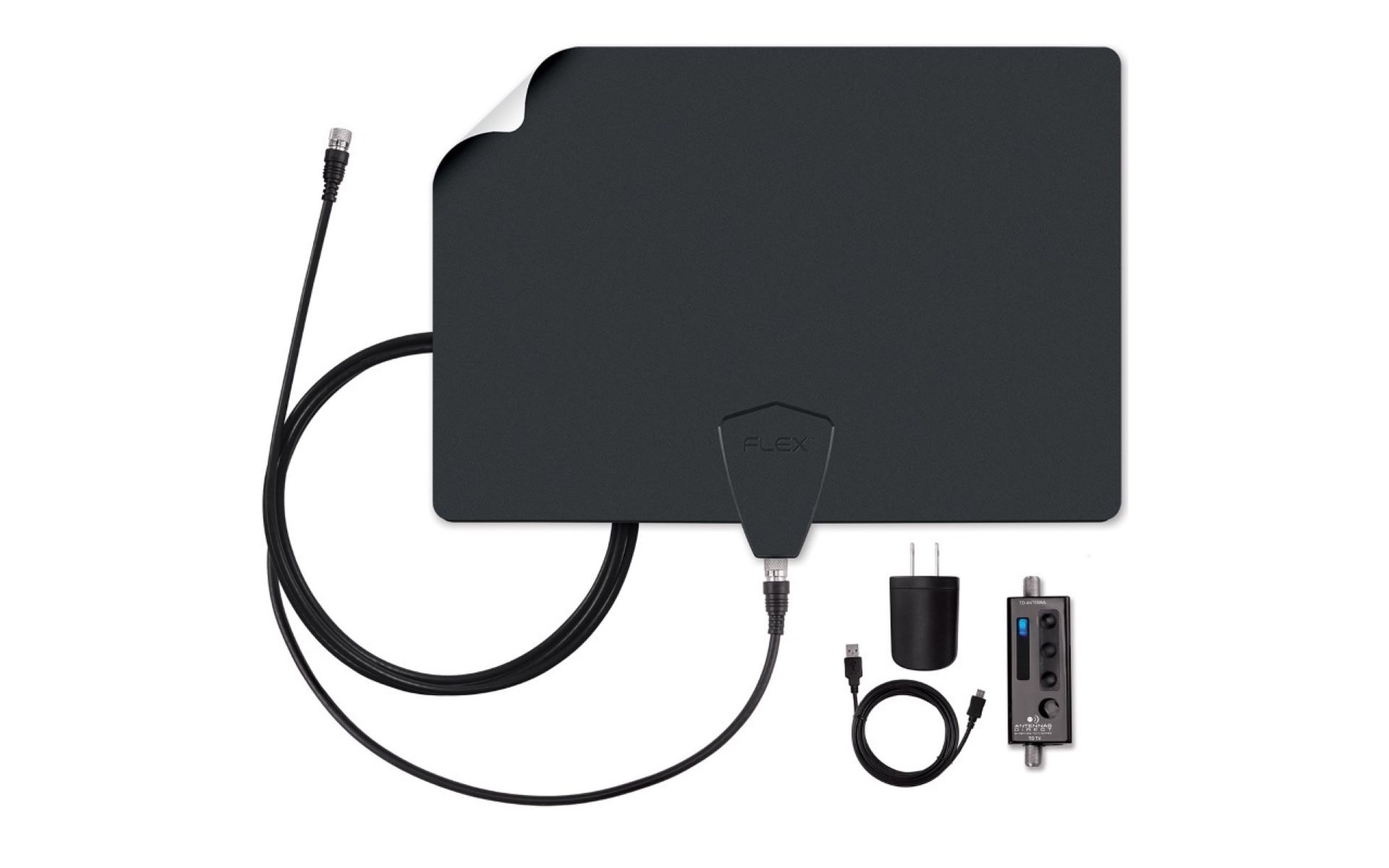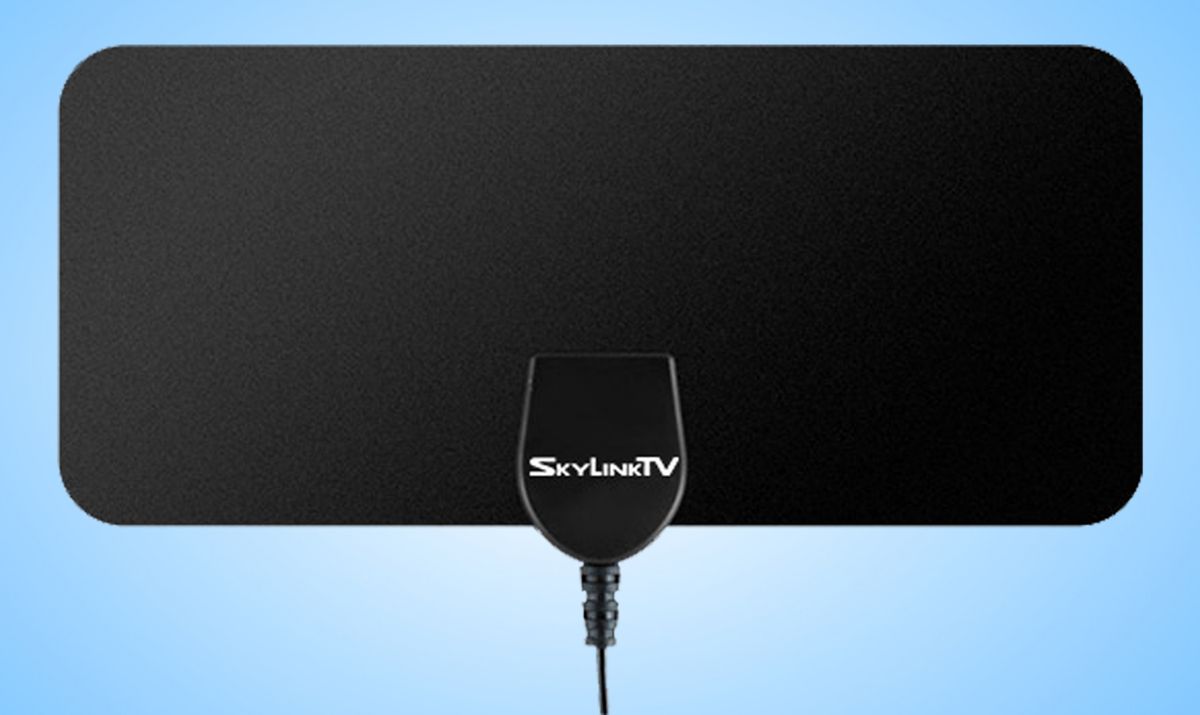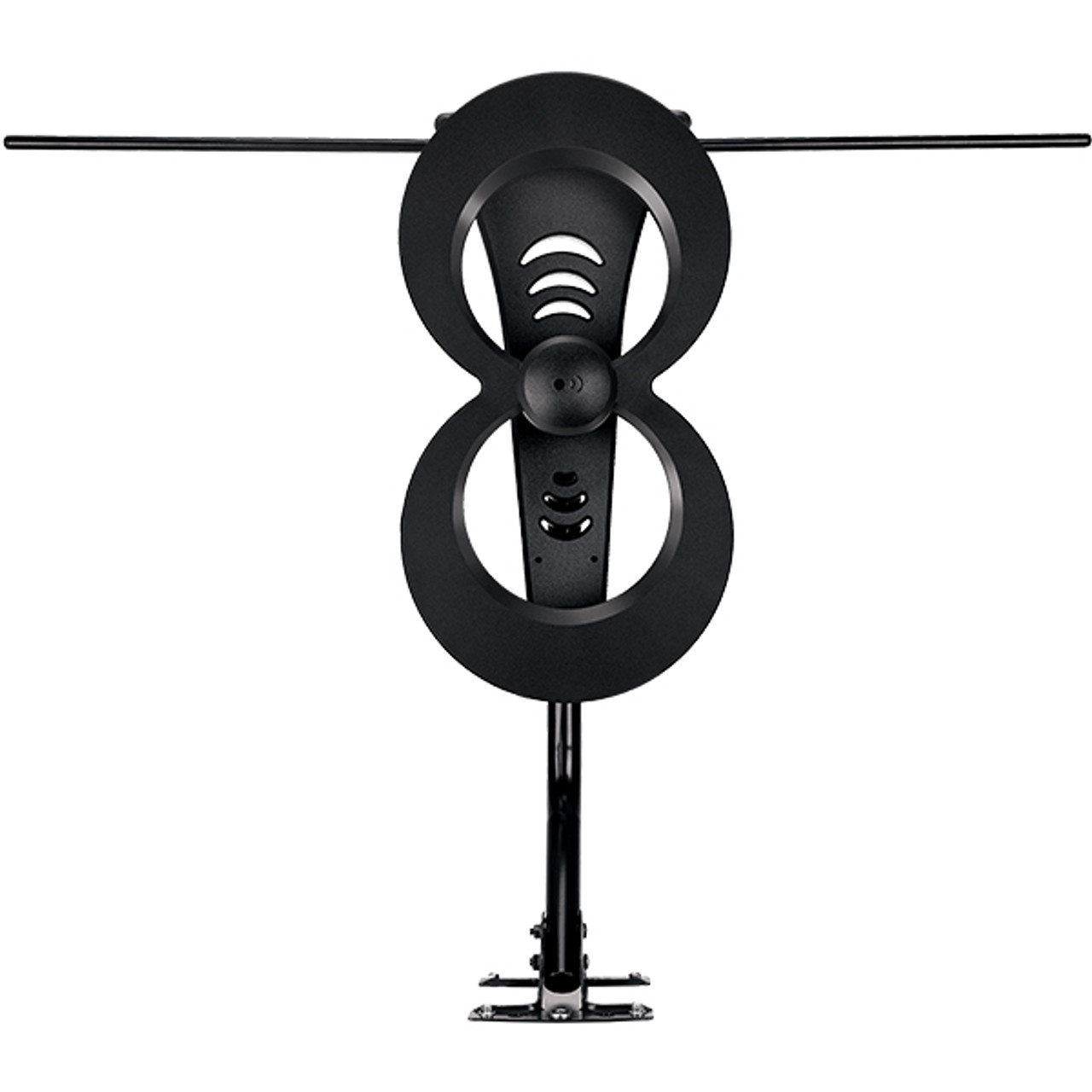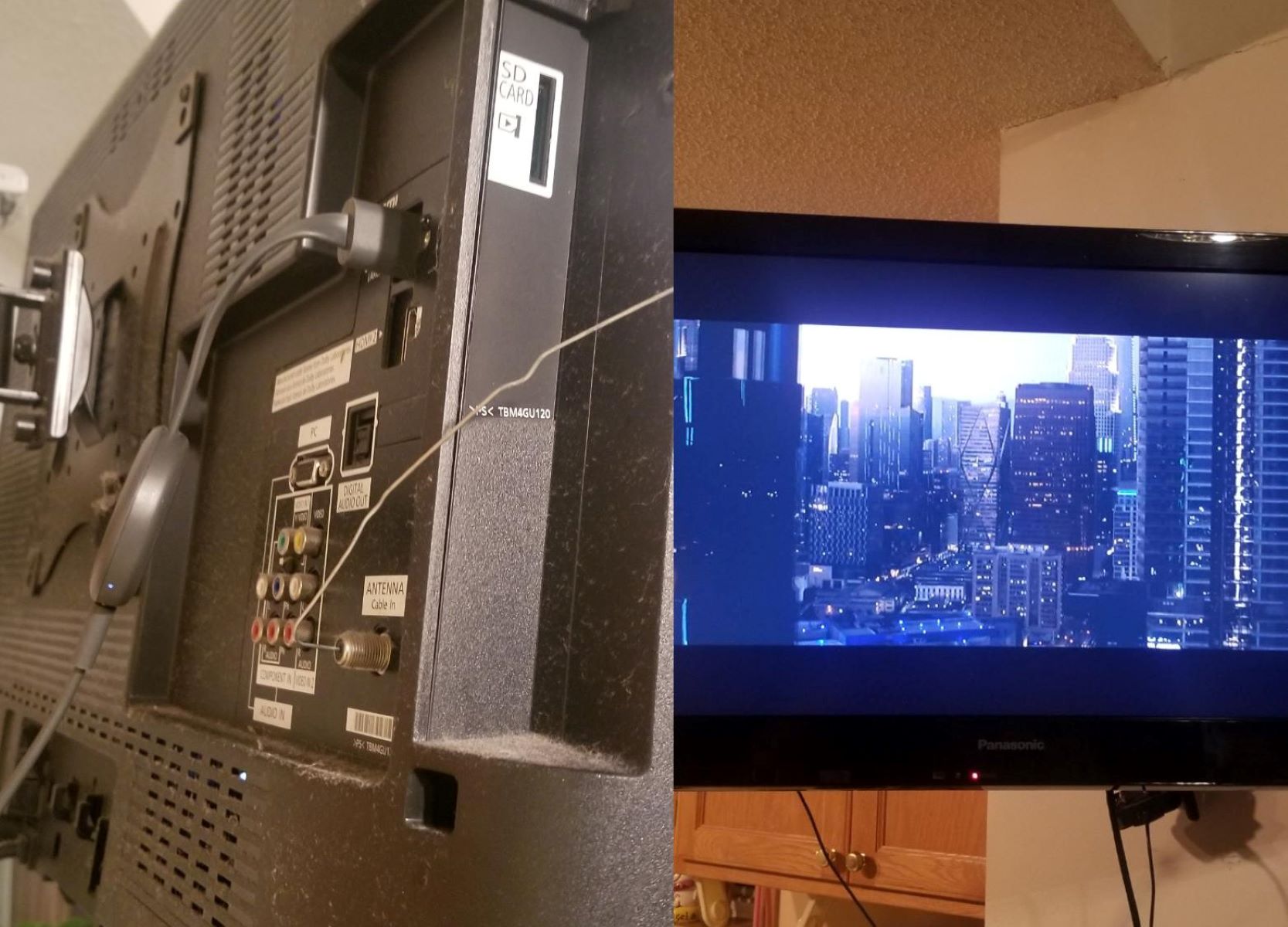Introduction
Television is a beloved source of entertainment and information for millions of people around the world. Whether you are binge-watching your favorite shows, catching up on the latest news, or immersing yourself in the breathtaking scenes of a movie, having a strong and reliable TV reception is crucial for an uninterrupted viewing experience.
While cable and satellite TV services have dominated the market in recent years, many people are now turning back to the good old TV antenna for accessing free over-the-air broadcasts. Not only does it provide access to local channels without a monthly subscription fee, but it also delivers high-definition picture quality that can rival or even surpass the clarity of cable or satellite transmissions.
However, in order to fully enjoy the benefits of a TV antenna, you need to ensure that you are getting the best possible reception. This can be a challenge, especially if you live in an area with weak signal strength or surrounded by obstacles that obstruct the signal.
In this article, we will guide you through the steps to optimize your TV antenna reception, so you can enjoy crystal-clear broadcasts without any frustrating signal issues. Whether you are a tech-savvy individual or a complete newbie in the world of antennas, our tips and techniques will help you get the best possible reception in no time.
So, without further ado, let’s dive into the world of TV antennas and discover how to achieve the best reception for your viewing pleasure.
Understanding TV Antennas
Before we delve into optimizing your TV antenna’s reception, it’s essential to have a basic understanding of how TV antennas work. A TV antenna, also known as an aerial, is a device that receives broadcast signals from television stations and converts them into audio and visual content for your television.
TV antennas operate on the principle of electromagnetic waves. When a television station broadcasts a signal, it travels through the air as an electromagnetic wave. The TV antenna picks up these waves and converts them into electrical signals, which are then transmitted to your television for decoding and displaying.
There are two primary types of TV antennas: indoor and outdoor. Indoor antennas are compact and easy to install, making them suitable for apartments and urban areas with good signal coverage. Outdoor antennas, on the other hand, are larger and more powerful, designed to capture signals from greater distances or in areas with weaker signals.
Another crucial factor to consider is the frequency range of the TV antenna. Over-the-air television signals are broadcasted on different frequencies, namely Very High Frequency (VHF) and Ultra High Frequency (UHF). VHF frequencies are lower and ideal for capturing signals from farther distances, while UHF frequencies are higher and better suited for suburban or urban areas with shorter distances to television towers.
Understanding the type of TV antenna suitable for your needs and the frequency range it supports will help you make an informed decision when shopping for an antenna. It’s crucial to choose an antenna that aligns with your specific location, signal strength, and broadcast tower positioning.
Now that we have a basic understanding of how TV antennas function, let’s explore the key factors in selecting the right antenna to ensure optimal reception.
Choosing the Right TV Antenna
When it comes to optimizing your TV antenna reception, selecting the right antenna for your location and needs is crucial. Here are some key factors to consider when choosing the right TV antenna:
1. Signal Strength: Start by assessing the signal strength in your area. You can use online tools or apps to determine the location and distance of broadcast towers. This information will help you choose an antenna with the appropriate range and gain to capture signals effectively.
2. Type of Antenna: Consider whether an indoor or outdoor antenna is more suitable for your situation. Indoor antennas are compact and easy to install, making them convenient for urban areas with good signal coverage. Outdoor antennas, on the other hand, offer better reception and are ideal for areas with weak signal strength or longer distances from broadcast towers.
3. Frequency Range: Check the frequency bands used by the television stations in your area. Ensure that the antenna you choose supports both VHF and UHF frequencies to capture the full range of channels available in your region.
4. Antenna Design: TV antennas come in various designs, such as rabbit ears, Yagi, or bowtie antennas. Each design has its own strengths and weaknesses, so consider factors like the distance to broadcast towers, local terrain, and potential sources of interference when selecting the antenna design that suits your needs.
5. Amplification: If you live in an area with weak signal strength, an antenna with built-in amplification can help boost the signal. However, be cautious as too much amplification can result in signal overload and interference.
6. Budget: Finally, consider your budget when choosing a TV antenna. Keep in mind that a higher-priced antenna doesn’t always guarantee better reception. Research and read reviews to find models that offer a good balance between performance and cost.
By considering these factors and doing some research, you can choose a TV antenna that maximizes signal reception in your specific location. Once you have carefully selected the right antenna, the next step is positioning it for optimal reception, which we will discuss in the next section.
Positioning the Antenna
Now that you have chosen the right TV antenna, it’s time to position it correctly for optimal reception. Here are some tips to help you position your antenna effectively:
1. Find the Ideal Location: Start by finding the best location in your home to place the antenna. Generally, higher positions such as attics, rooftops, or near windows tend to provide better signal reception. Avoid placing the antenna near large objects, metallic structures, or appliances that can cause interference.
2. Consider Line of Sight: Try to position the antenna in a location where it has a clear and unobstructed line of sight to the broadcast towers. Buildings, trees, and other obstructions can weaken the signal, so aim for a location that minimizes these obstacles.
3. Adjust the Antenna Angle: Experiment with the angle of the antenna for better reception. Start by orienting it in the direction of the nearest broadcast towers. If you are unsure of the tower locations, you can use online tools or apps to help you determine the proper orientation.
4. Test Multiple Locations: Don’t be afraid to try different locations and angles for your antenna. Sometimes, even a slight adjustment can significantly improve signal strength and reception. Keep track of the locations that yield the best results and choose the one that provides the most consistent and reliable performance.
5. Use a Signal Strength Meter: Utilize a signal strength meter or signal finding app on your TV or smartphone to assist you in finding the optimal signal reception position. This tool will help you identify the direction and angle that provides the strongest signal.
Remember, every location is unique, and the ideal antenna positioning will vary depending on your surroundings and geographical factors. It may take some trial and error to find the sweet spot for your antenna, so be patient and persistent in your efforts.
Once you have positioned the antenna, the next step is to fine-tune its direction to ensure the best reception, which we will explore in the next section.
Adjusting Antenna Direction
After positioning your TV antenna, the next step in optimizing reception is adjusting its direction. Here’s how you can fine-tune the antenna’s direction for the best signal:
1. Check Signal Strength: Start by checking the signal strength on your TV or digital tuner. Most devices have a signal strength indicator that displays the current reception level. Walk around your home or rooftop while monitoring the signal strength to determine the direction with the strongest signal.
2. Rotate the Antenna: Once you identify the direction with the strongest signal, gently rotate the antenna, either manually or using its built-in rotor, to align it towards the broadcast towers. Make gradual adjustments and periodically check the signal strength to find the optimal position.
3. Avoid Obstacles: Keep an eye out for any potential obstacles that may be interfering with the signal. Large trees, tall buildings, or other structures can block or weaken the signal. Adjust the antenna’s direction to avoid these obstacles and maximize reception.
4. Fine-tune Angle: In addition to the rotation, you may need to fine-tune the angle of the antenna. This adjustment is especially crucial for capturing signals from towers that are further away or situated in different directions. Experiment with slight angle adjustments to optimize reception.
5. Single-Directional Antennas: If you have a single-directional antenna, also known as a unidirectional antenna, it is designed to receive signals from a specific direction. Ensure that the antenna is pointing directly towards the broadcast towers to achieve the best possible reception.
6. Multi-Directional Antennas: If you have a multi-directional antenna, also known as an omnidirectional antenna, it can receive signals from all directions. However, fine-tuning the orientation towards the strongest signal can still enhance reception quality.
Remember that factors such as weather conditions and atmospheric interference can impact signal strength. It’s a good practice to periodically re-adjust your antenna’s direction to maintain optimal reception, especially during storms or changes in climate.
By carefully adjusting the direction of your TV antenna, you can ensure that it captures the maximum strength of the broadcast signals, resulting in clear and reliable reception for your enjoyment.
Using an Amplifier
If you’re experiencing weak TV signal reception, even after positioning and adjusting your antenna, using an amplifier can help boost the signal strength. Here’s how you can use an amplifier to improve your TV antenna reception:
1. Assess Signal Strength: Before considering an amplifier, it’s important to determine if your signal truly requires amplification. Check the signal strength using your TV or digital tuner’s signal meter. If the signal strength is consistently weak across all channels, an amplifier may be beneficial.
2. Choose the Right Amplifier: Selecting the appropriate amplifier is crucial to avoid overloading the signal or introducing unwanted noise. Match the amplifier’s gain, expressed in decibels (dB), to your specific needs. Higher gain amplifiers are suitable for longer cable runs or weaker signals, while lower gain amplifiers are best for shorter cable lengths.
3. Install the Amplifier: Begin by disconnecting the antenna from your TV or tuner. Then, connect the antenna cable to the input port on the amplifier. Next, connect a cable from the amplifier’s output port to the input port on your TV or tuner. Ensure all connections are secure and tight to prevent signal loss.
4. Power the Amplifier: Many amplifiers require a power source to function. Depending on the model, the amplifier can be powered through a USB port on your TV or by using an AC adapter. Follow the manufacturer’s instructions to power the amplifier correctly.
5. Test and Adjust: Once the amplifier is installed and powered, rescan for channels on your TV or tuner to detect the signal improvements. Monitor the signal strength on various channels to ensure it remains within the optimal range. If the signal becomes too strong, you may need to adjust or decrease the amplifier’s gain.
6. Troubleshooting: In some cases, an amplifier may not significantly improve reception or may introduce more problems. Signal overload or interference from nearby strong signals can disrupt your TV reception. If you experience issues after installing an amplifier, try reducing the gain or removing the amplifier altogether to see if the reception improves.
Keep in mind that while an amplifier can enhance weak signals, it cannot create reception where there is none. If you’re located too far from the broadcast towers or in an area with extremely weak signals, an amplifier may not provide the desired improvement.
Ultimately, using an amplifier can be an effective solution for boosting TV antenna reception, but it’s important to carefully assess the signal strength, choose the right amplifier, and monitor the signal after installation to ensure optimal results.
Avoiding Interference
To ensure optimal TV antenna reception, it’s important to minimize interference that can disrupt the signal. Here are some tips to help you avoid interference and improve your overall reception:
1. Positioning: Place your antenna as far away as possible from potential sources of interference, such as power lines, electrical appliances, fluorescent lights, or large metallic objects. These can introduce electromagnetic interference that weakens the TV signal. Keep your antenna away from these items and ensure a clear line of sight to the broadcast towers.
2. Grounding: Properly grounding your antenna can reduce the risk of interference caused by static discharge or lightning strikes. Install a grounding block and connect a grounding wire from the antenna mast to a grounding rod or an existing grounding system in your home. Consult an electrician or professional for guidance on proper grounding techniques.
3. Cable Quality: Use high-quality coaxial cables to connect your antenna to your TV or digital tuner. Inferior or damaged cables can introduce signal loss and interference. Opt for coaxial cables with proper shielding and insulation to minimize signal degradation and external interference.
4. Filters: Install a signal filter or an FM trap filter, depending on your location and the types of interference you encounter. These filters help eliminate unwanted signals from FM radio stations or other nearby electronic devices that may interfere with your TV reception.
5. Wireless Devices: Keep wireless devices, such as Wi-Fi routers, cordless phones, or baby monitors, away from your TV antenna. These devices can emit signals that interfere with the TV signal. Ensure there is enough distance between your antenna and these wireless devices to minimize interference.
6. Signal Amplifier Placement: If you’re using an amplifier, place it as close to the antenna as possible. Installing the amplifier near the TV or tuner can amplify interference along with the signal, which can degrade the overall reception quality.
7. Weather Conditions: Keep in mind that severe weather conditions, such as heavy rain or snow, can impact TV antenna reception. These weather elements can obstruct the signal and weaken the reception temporarily. So, be aware that your reception quality may vary during such conditions.
By taking these measures to minimize interference, you can enhance your TV antenna reception and enjoy a clearer, more reliable viewing experience. Additionally, periodically monitoring and adjusting your antenna setup can help ensure optimal reception quality, especially in areas with changing radio frequency environments.
Testing and Fine-tuning the Reception
Once you have positioned your TV antenna, adjusted its direction, and minimized interference, it’s time to test and fine-tune the reception for optimal performance. Here are some steps to help you test and fine-tune your TV antenna reception:
1. Rescan Channels: After making any changes to your antenna setup, it’s important to rescan for channels on your TV or digital tuner. This will ensure that you capture all available channels based on your new antenna positioning and adjustments.
2. Signal Strength Check: Use the signal strength meter on your TV or digital tuner to check the reception quality of the channels. Look for signals that have a consistently strong signal strength, as this indicates good reception. Weak signals or channels with fluctuations in signal strength may require further adjustment.
3. Fine-tune Antenna Angle: If you notice any channels with weak or intermittent signals, make small adjustments to the angle of your antenna to find the best position for those specific channels. Gradually rotate the antenna and test the signal strength until you achieve the optimal reception for each channel.
4. Channel Positioning: Some channels may broadcast from different directions or towers. If you have a multi-directional antenna, adjust the orientation or angle of the antenna to maximize the signal strength for each channel. Experiment with different directions to find the best reception for all channels.
5. Cable and Connection Check: Ensure that all coaxial cable connections are secure and free from damage or interference. Loose or damaged cables can result in signal loss or degradation. Inspect the cables periodically and replace them if necessary.
6. Amplifier Adjustment: If you have an amplifier, monitor the signal strength after installation and adjust the amplifier’s gain if needed. Over-amplification can cause signal distortion or interference, so find the right balance to enhance the signal without introducing unnecessary noise.
7. Seasonal Considerations: Keep in mind that TV antenna reception may vary with different seasons. Foliage on trees, changes in weather conditions, or atmospheric changes can affect signal strength. Periodically retest and fine-tune your antenna positioning to account for these seasonal variations.
Testing and fine-tuning your TV antenna reception may require some time and patience, but the effort will reward you with optimal reception for all your favorite channels. Regularly retest and make any necessary adjustments to maintain the best possible reception quality.
Conclusion
Optimizing your TV antenna reception is essential for a reliable and enjoyable viewing experience. By following the steps outlined in this guide, you can maximize the strength and quality of your TV signal. Understanding the basics of TV antennas, selecting the right antenna for your needs, and properly positioning it are fundamental factors for achieving optimal reception.
Positioning the antenna in a location with a clear line of sight to the broadcast towers, adjusting its direction, and avoiding potential sources of interference can significantly improve signal strength. Using an amplifier can also help boost weak signals, but it’s important to select the appropriate amplifier for your setup and monitor signal strength to avoid over-amplification.
Additionally, fine-tuning the reception through scanning for channels, checking signal strength, and making small adjustments to the antenna angle can further enhance the overall experience. Regularly testing and fine-tuning your antenna setup will ensure that you maintain optimal reception quality, especially in response to changing environmental factors.
Remember that each location is unique, and it may take some experimentation and patience to achieve the best results. By applying the knowledge and techniques provided in this guide, you can enjoy crystal-clear broadcasts and fully immerse yourself in the world of television entertainment.
So, go ahead and implement these practices to optimize your TV antenna reception and elevate your viewing experience to new heights!







